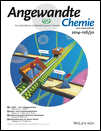Hydrogen Abstraction/Acetylene Addition Revealed†
This work was supported by the US Department of Energy, Basic Energy Sciences (grant number DE-FG02-03ER15411 to the University of Hawaii). The authors MA and TPT, and the Advanced Light Source are supported by the Director, Office of Science, Office of Basic Energy Sciences, of the U.S. Department of Energy under contract number DE-AC02-05CH11231, through the Chemical Sciences Division.
Abstract
For almost half a century, polycyclic aromatic hydrocarbons (PAHs) have been proposed to play a key role in the astrochemical evolution of the interstellar medium (ISM) and in the chemistry of combustion systems. However, even the most fundamental reaction mechanism assumed to lead to the simplest PAH naphthalene—the hydrogen abstraction–acetylene addition (HACA) mechanism—has eluded experimental observation. Here, by probing the phenylacetylene (C8H6) intermediate together with naphthalene (C10H8) under combustion-like conditions by photo-ionization mass spectrometry, the very first direct experimental evidence for the validity of the HACA mechanism which so far had only been speculated theoretically is reported.




